horticulture guruji
Pointed gourd Cultivation
Pointed gourd (Parval) possesses high value as compared to other vegetables as it is rich in many nutrients and has medicinal properties such as digestibility, constipation, and beneficial in heart and brain diseases. Among the cucurbits, it is perennial and dioecious in nature, due to which its cultivation is different from other cucurbits. This chapter explains in detail the cultivation of pointed gourd.
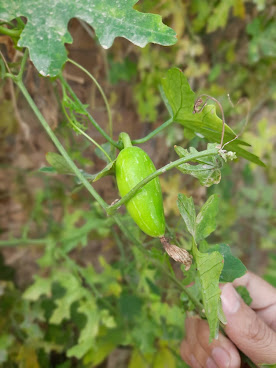
Other Name:–Parmal, Parwal, and Potol
Botanical Name:- Trichosanthus dioca
Family:- Cucurbitaceae
Chromosome Number:- 2n=22
Origin:- India (Assam)
Important Point
- The pointed gourd is dioecious.
- The pointed gourd is a perennial cucurbit.
- Plant 10% male plant planted to get a high yield.
- Propagation through vine cutting (2000-2500 Cutting/hac).
Watch Lecture Video

Area and Production
- The pointed gourd is widely cultivated in Assam, West Bengal, Bihar, and UP.
- The pointed gourd is the most important summer crop grown in Bihar and UP.
- According to NHB data 2018, total area in pointed gourd cultivation is 20 thousand hectare and production 310 thousand metric tones.
Economic Importance
- The pointed gourd is the most nutritive vegetable.
- It is digestible, diuretic, laxative, and useful in disorders of the circulatory system.
- It is useful in invigorates the heart and brain.
- Pointed gourd contains 12.0 gm moisture, 0.5gm protein, 2.2 gm carbohydrates, 25.50 IU vitamin A and 23 mg vitamin C per 100g edible portion.
- A decoction made from its stem is useful in cough.
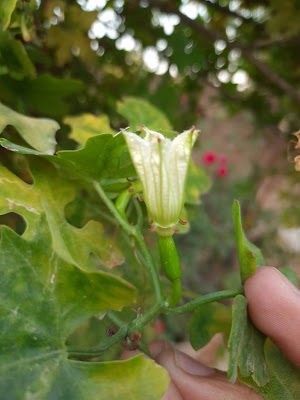
Climate
A hot and Humid climate is best for pointed gourd cultivation. Low temperature below 5oC unfavorable for the crop. It is cultivated where annual rainfall is 100 – 150 cm. The pointed gourd is drought tolerant but waterlogging harm the crop. Pointed gourd in winter remain dormant and start growing in spiring.
Soil
Well-drained, rich in organic matter sandy loam soil is best for its cultivation. Pointed gourd also cultivated in river beds (Diara Cultivation) in eastern UP, Assam, and Bihar. Sodic soil is not suitable for its cultivation.
Varieties
Bihar Sarif
Kalyani
Narendra parval 207
Shankolia
Faizabad Parval 1 (FP1)
Faizabad Parval 3 (FP3)
Faizabad Parval 4
Faizabad Parval 5
Rajendra Parval 1
Rajendra Parval-2
Swarna Rekha
Dandli
Chhota Hilli
Swarna Alaukik
Damodar
CHES Hybrid 1: Resistant to Fruit fly.
CHES Hybrid-2
Guli
Sopari Safeda
Niria
Santokhiya
Propagation and Sowing time
The pointed gourd is a dioecious and perennial crop. It is propagated by vine cutting as well as root sucks. Raising crop through root sucks is the easiest way but have some limitation due to lack of planting material so it is not used commercially. Root suckers are collected from an old plantation in November or December month, when the crop is dormant. Immediately after collecting root suckers, it is planted in nursery or direct in the field.
Vine cutting is a commercial method of propagation in the pointed gourd. Stem cuttings about 60-90 cm long with 7-8 nodes are prepared from a one-year-old vine in October. Cutting is also prepared from male plants. It is planted in the nursery for two-three months then shifted to the main field. About 10-12% male vine cutting also planted along with female plants to get more yield.
About 2000-2500 rooted cuttings are Sufficient to raise one-hectare land.
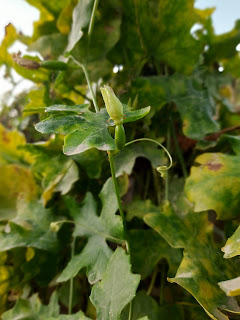
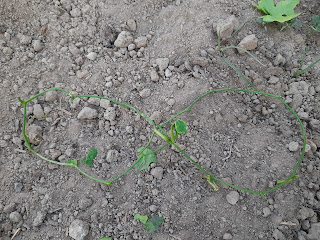

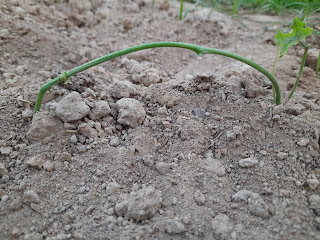 Pointed gourd ring method
Pointed gourd ring methodSowing
Generally, three planting methods are used for planting ‘Lunda’ or ‘Lachhi’, Straight vine method, and ring method.
‘Lunda’ or ‘Lachhi’ method:- ‘Lunda’ or ‘Lachhi’ technique in this framework, the cutting are taken from more than one-year-old plant around 1-1.5 m long with 8-10 nodes for every cutting are taken and collapsed into a figure of eight usually known as ‘lunda’ or ‘lachhi. This ‘lachhi’ should be set level in the pit and squeezed 3-5 cm somewhere down in the center into the soil. New cow dung might be applied over the focal portion of the pit to upgrade the growing if there is no downpour.
Straight vine method:– Prepare long furrows about 30cm deep at a spacing of 2 m. which is filled with a mixture of soil and FYM. The cuttings are planted 15 cm deep in-furrow at a distance of 2 m between the ends.
Ring method: The plant cutting is curled into a twisting; or ring shape and planted straightforwardly on the hills covering one-half to 66% of the ring under the soil.
Manures and Fertilizers
Fertilizers are applied in pointed gourd varies with varieties and locality. Generally, 20-25 tones/ hac of FYM added to soil at the time of land preparations. The economic dose of nitrogen 80-100 Kg/hac, phosphorus 50Kg/hac, and 50Kg/hac potash. A full dose of phosphorus, potash, and half dose of nitrogen is applied before planting in the pits. The remaining half dose of nitrogen is top-dressed in side bands.
Irrigation
At the initial stage of planting, the crop is regularly irrigated after that light irrigation at 10-15 days intervals should be given depending upon the soil and climate. Over irrigation at the initial stage increase the possibility of Fusarium attack.
Weeding
Weeds are uprooted manually when they appear, to prevent damage to tender vine and flower buds. Mulching with straw, sugarcane trash help in the suppression of weeds and protect the fruit to direct contact with soil.
Training and Pruning
Significantly yield is increased when the crop is trained on bower and trellis. Before the winter (October-November) vine should be pruned 15 cm from the ground. Deep pruning should be avoided.
Use of PGR
Spray of NAA (400-500ppm) on female flower buds before anthesis promotes parthenocarpic fruit set.
Harvesting
The crop is ready for harvesting after 80-90 days of planting. Picking of fruits should be done at weekly intervals. Fruits are harvest when they are still green and tender.
Yield
In the first year the harvest yield just 60-90 q / hac yet in the resulting year (as long as 4 Years) 150-200q / hac.
